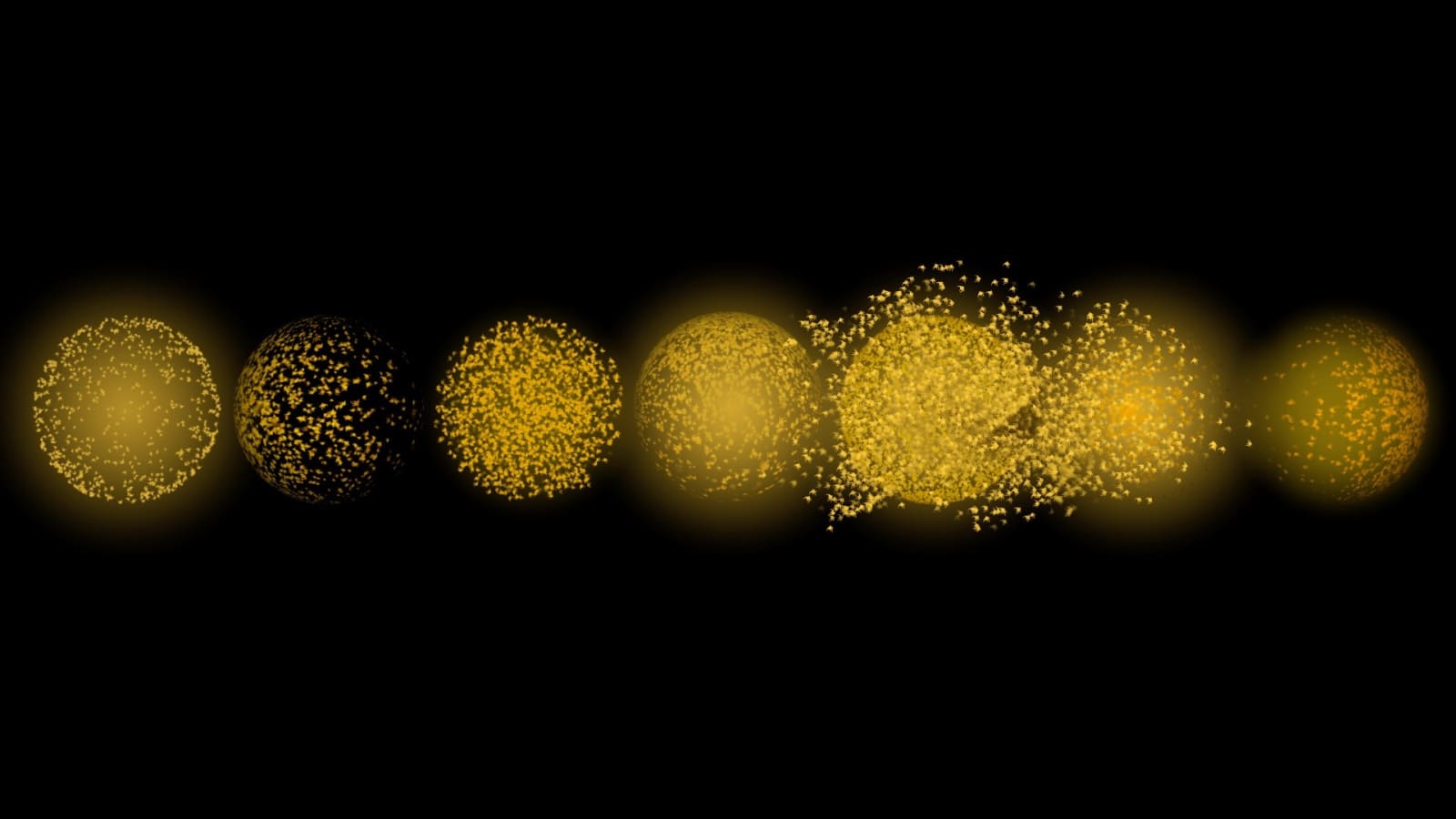

Shahzia Sikander
Singing Suns, 2016
HD-video animation
Music by Du Yun
Music by Du Yun
3'24"
edition of 6 plus 2 artist's proofs
Copyright The Artist
Further images
'Singing Suns' (2016) is an extension of Shahzia Sikander’s recent animation work, all of which explores ideas of conflict and tension over the control of strategically desired geography and historical...
'Singing Suns' (2016) is an extension of Shahzia Sikander’s recent animation work, all of which explores ideas of conflict and tension over the control of strategically desired geography and historical events. A recurring form, one of many she developed as part of her visual language, is a silhouette of the hair worn by a female worshipper of Krishna known as a Gopi, and is at the forefront of both 'Singing Sun's and 'Singing Spheres' (2016).
The single unit of the Gopi hair silhouette has tremendous possibilities. When reproduced in the millions, the hair silhouettes operate as a pulsating mass of movement that oscillates between several representations, such as the sun, spheres, swarms, birds, bats or insects. What is important is the kinetic thrust, the enormous energy charge at the interface with this undulating movement. It’s simultaneously tangible—a rigid icon—and elusive, constantly morphing and altering. Powerful and subliminal, the beauty of the Gopi particles is that they can operate as both the unhinged and the durable, functioning as a force, an engine for survival.
The 'Singing Suns' and 'Singing Spheres' are voices in motion, the final iteration of the Gopi hair particles. At once singular and representational, they call into question the philosophical and the political, as they represent an unfolding of narrative based on shifting migratory patterns, interactions, cultural quarantine, autonomous verbal and poetic languages, and the quest for human identity.
For the music of 'Singing Suns' Sikander collaborated with composer Du Yun. Du Yun’s music is created in response to Sikander’s drawings. Du Yun is a gestural composer, which overlaps with Sikander’s practice in terms of her use of movement to disrupt static space. Shahzia Sikander often uses a gestural relationship to materials like ink to draft out a series of images. Yun also writes linearly to compose a non- linear event. The music is unfixed, which parallels Sikander’s disinterest in linear narratives.
The single unit of the Gopi hair silhouette has tremendous possibilities. When reproduced in the millions, the hair silhouettes operate as a pulsating mass of movement that oscillates between several representations, such as the sun, spheres, swarms, birds, bats or insects. What is important is the kinetic thrust, the enormous energy charge at the interface with this undulating movement. It’s simultaneously tangible—a rigid icon—and elusive, constantly morphing and altering. Powerful and subliminal, the beauty of the Gopi particles is that they can operate as both the unhinged and the durable, functioning as a force, an engine for survival.
The 'Singing Suns' and 'Singing Spheres' are voices in motion, the final iteration of the Gopi hair particles. At once singular and representational, they call into question the philosophical and the political, as they represent an unfolding of narrative based on shifting migratory patterns, interactions, cultural quarantine, autonomous verbal and poetic languages, and the quest for human identity.
For the music of 'Singing Suns' Sikander collaborated with composer Du Yun. Du Yun’s music is created in response to Sikander’s drawings. Du Yun is a gestural composer, which overlaps with Sikander’s practice in terms of her use of movement to disrupt static space. Shahzia Sikander often uses a gestural relationship to materials like ink to draft out a series of images. Yun also writes linearly to compose a non- linear event. The music is unfixed, which parallels Sikander’s disinterest in linear narratives.


